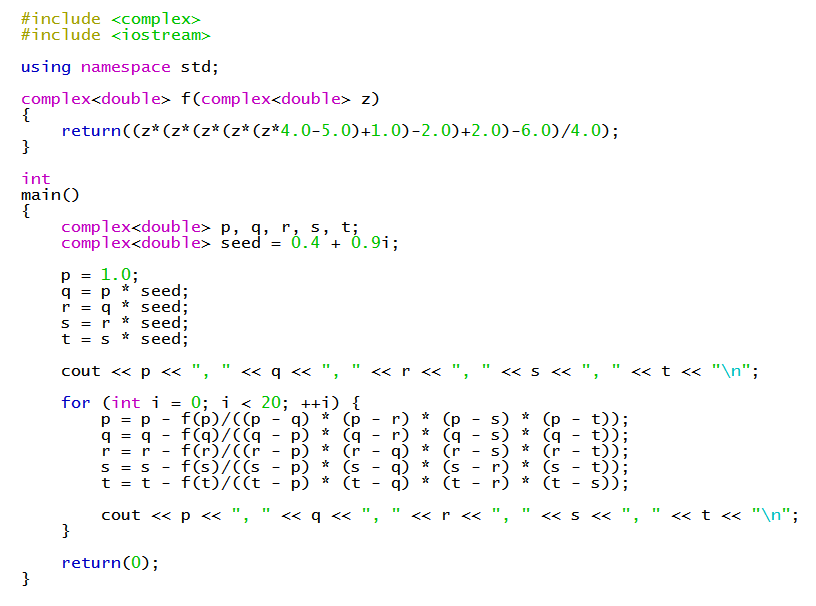How do you find the number of complex, real and rational roots of #4x^5-5x^4+x^3-2x^2+2x-6=0#?
1 Answer
This quintic equation has one positive irrational Real zero and two complex conjugate pairs of non-Real Complex zeros.
Explanation:
Given:
#f(x) = 4x^5-5x^4+x^3-2x^2+2x-6#
Fundamental Theorem of Algebra
The Fundamental Theorem of Algebra (FTOA) tells us that a polynomial in one variable of degree
A straightforward corollary of the FTOA, often stated with it, is that a polynomial of degree
In our example,
Descartes' Rule of Signs
The signs of
The signs of
Rational Roots Theorem
By the rational roots theorem, any rational zeros of
In addition, from Descartes' Rule of Signs, we know that such zeros can only be positive. So the only possible rational zeros are:
#1/4, 1/2, 3/4, 1, 3/2, 2, 3, 6#
We find:
#f(1/4) = -45/8#
#f(1/2) = -89/16#
#f(3/4) = -747/128#
#f(1) = -6#
#f(3/2) = 15/16#
#f(2) = 46#
#f(3) = 576#
#f(6) = 24774#
So
Durand-Kerner Algorithm
We can use the Durand-Kerner algorithm to find numerical approximations to the zeros.
In our example, we find approximations:
#x_1 ~~ 1.47294#
#x_(2,3) ~~ 0.547393+-0.873706i#
#x_(4,5) ~~ -0.658864+-0.723817i#
See https://socratic.org/s/aBf43swQ for another example and more information on this method.
So we find that
Here's the C++ program I used to find the zeros:


